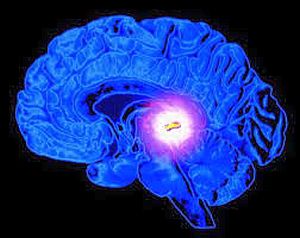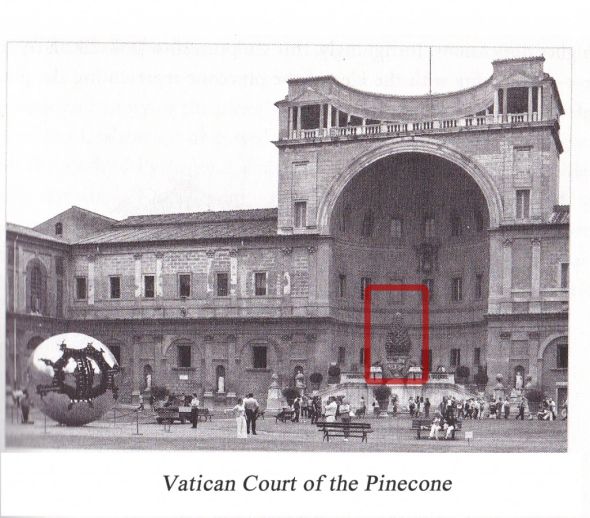“The light of the body is the eye: if therefore thine eye be single, thy whole body shall be full of light…” Matthew 6:22-23
A Gateway To Between The Physical And Metaphysical?
 Jeffrey Roberts – Situated at the anatomical center of our brain lies a mysterious gland that may be the intermediary gate that bridges our physical and spiritual experiences here on Earth.
Jeffrey Roberts – Situated at the anatomical center of our brain lies a mysterious gland that may be the intermediary gate that bridges our physical and spiritual experiences here on Earth.
Seventeenth-Century French philosopher Rene Descartes coined this organ, called the pineal gland, as the “seat of the soul”, as he believed it provided people with a medium from which our soul could be expressed through our physicality.
The pineal gland has been a topic of great debate over the past couple of decades as the science community is still trying to discover its complete biological function. Dr. Rick Strassman, M.D., author of DMT: The Spirit Molecule, has dedicated years of research to the pineal gland as he suggests that this gland is the factory for a powerful brain chemical called DMT (Di-Methyl Tryptamine) which when produced induces a person into a psychedelic and mystical experience.
Many different cultures talk about our “third eye,” and modern theories suggest that this may be a reference to the pineal. Even more peculiar is the fact that pineal gland symbology can be traced to many civilizations such as the Romans, Mexicans, Egyptians, Babylonians and the Greeks.
It is interesting to note that even the Catholic Church displays pineal gland imagery, as the Vatican Square contains the largest pineal-like statue in the world. So what could all of this mean? Is there ancient knowledge of this gland that previous cultures had access to? Furthermore, what role does the pineal gland play in our spiritual experiences and how can we explain this in physiological terms?
One of the earliest accounts of the pineal gland is in the writings of a third-century B.C. Greek physician named Herophilus, where he discusses the piniform or pinecone shaped organ as being the size of our pinkie fingernail. The name comes from the Latin word pinea, which literally means “pinecone.”
As mentioned previously, the gland sits at the approximate geometric center of the brains mass. Additionally, the gland is not technically part of the brain, as it is not protected by the blood-brain barrier. In his book DMT: The Spirit Molecule, Dr. Rick Strassman discusses the glands unique solitary status within the brain,
“[…] All other brain sites are paired, meaning that they have left and right counterparts; for example, there are left and right frontal lobes and left and right temporal lobes. As the only unpaired organ deep within the brain, the pineal gland remained an anatomical curiosity for nearly two thousand years. No one in the west had any idea what its function was.”
Additionally, the pineal gland sits close to the sensory and emotional centers of the brain, which could explain why spiritual experiences can evoke so much emotion and sensation. In the 17th century Rene Descartes was searching for the source of our thoughts, and proposed that the solitary pineal organ could be the generator. Descartes was interested in the location of the pineal in relation to the cerebrospinal fluid byways, and suggested that when the pineal gland “secreted our thoughts” that they moved through the cerebrospinal fluid to make its way to the rest of the brain.
The Third Eye
David Wilcock’s New York Times bestseller The Source Field Investigations discusses the idea that our pineal gland is our “third eye” which provides us with visuals during psychedelic and near death experiences (NDE), and also while we dream, finding biological evidence to support this claim,
“[…] it is apparent that several relationships exist between the pineal gland and retina. The similarities in development and morphology have been obvious for many years…. Although the mammalian pineal gland is considered to be only indirectly photosensitive, the presence of proteins in the pineal which are normally involved in photo-transduction [light sensing] in the retina, raises the possibility that direct photic events may occur in the mammalian pineal gland…”
This idea has become a common theory in pineal gland research. Needless to say the pineal gland does appear to be set up for signal transduction, just like the retina of the eye, where it picks up visual images and sends them to the brain. Scientists suggest that the interior of the pineal gland is completely black, but we must question why our bodies would create this third eye with light detecting cells if there was no light to be detected in there. Could the images that are created when we dream or during an out-of-body experience come from the photic cells inside the pineal gland?
The Spirit Molecule
Strassman proposes that a potent psychedelic molecule called DMT is produced by the pineal gland. This molecule is found innate in nature, such as in certain grasses and tree roots and even in our own bodies. The experience brought on by humans who smoke isolated forms of DMT is said to be profoundly vivid, spiritual and life changing. Pineal DMT production must be regarded as plausible considering that the pineal gland is known to produce melatonin and serotonin, two neurotransmitters which are structurally very similar to DMT and which play a part in our mood and sleep cycles.
Pineal Gland Imagery Throughout History
To add to the mystery, let us consider the blatant pineal gland imagery that is expressed in sacred art and architecture all around the world. As mentioned before, the word pineal comes from a Latin word meaning “pinecone”, and therefore the pinecone was used to represent the pineal gland throughout history. Wilcock’s The Source Field Investigations devotes an entire chapter to the pineal gland and its representation throughout history. The following are just a few examples from the book:
“[…]
♦ A bronze sculpture of a hand from the mystery cult of Dionysus in the late Roman Empire has a pinecone on the thumb, amidst other strange symbols
♦ A Mexican god holds pinecones and a fir tree in a sculpture
♦ A staff of Egyptian god Osiris from a museum in Turino, Italy, has two “kundalini serpents” that entwine together and face a pinecone on the top
♦ The Assyrian/Babylonian winged god Tammuz is pictured holding a pinecone
♦ The Greek god Dionysus carries a staff with a pinecone on top
♦ The Catholic pope carries a staff with a pinecone directly above where his hand is positioned
♦ The largest pinecone sculpture in the world is prominently featured in Vatican Square- in the Court of the Pinecone
♦ King Tut’s golden burial mask features a “kundalini serpent” emerging from the general area of the pineal gland in his forehead
♦ Almost all Hindu gods and goddesses are pictured with a bindi, or third eye, between their eyebrows
♦ A statue of the Mesoamerican god Quetzalcoatl is shaped like the pineal gland and contains a necklace around Quetzalcoatl’s neck which is made out of pinecones…”

Continue reading @ CollectiveEvolution
SF Source CollectiveEvolution May 24 2014
